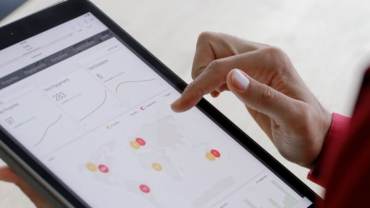
Key observations from the market
IFRS 17 publication timeline
As I write this, we are in the midst of a flurry of IFRS 17 investor events. The main focus of these at this stage has been to educate external stakeholders on the methodology and strategic choices insurers have taken, as well as outline the expected impact on balance sheets, KPIs and business more generally.
Looking ahead, only a few insurers have so far committed to disclose 2022 comparative figures in early 2023 as part of their FY22 financial statements (part of IAS 8 requirements). As a minimum, most appear to be considering a range around the opening 1 January 2022 shareholder equity impact. ESMA in May 2022 set the tone by recommending that the 2022 annual financial statements provide the quantitative impact of the application of IFRS 17 (where it is reasonably estimable) and explain the changes compared to the amounts reported under IFRS 4. This potentially includes the IFRS 17 profit or loss over 2022, which I suspect most insurers will not provide.
Methodology and strategic decisions:
The methodology adopted for IFRS 17 will drive financial communication and related KPIs over the next few years. For some players, IFRS 17 will fundamentally change the recognition and release of insurance profits:
- Most life insurers anticipate a decrease in IFRS Shareholder Equity due to the introduction of the CSM (Contractual Services Margin) and Risk Adjustment (however, this will not be universal as it depends on relative current accounting requirements).
- Negative impact on earnings generation is anticipated by some insurers, however earnings are anticipated to be more stable.
Some insurers have favoured continuity with existing frameworks, for example, by converging with Solvency II, where possible, in terms of methodology and calibration topics such as the discount rates and risk adjustment.
Some insurers, for example general insurers, expect stability in financial results; stable shareholder equity and earnings generation compared to IFRS 4.
First view on IFRS 17 KPIs
Continuity is observed for some KPIs even if there could be some variations in the calculation formulas and therefore in the targets, e.g. Return on Equity for profitability indicators and Combined Ratio for P&C technical profitability. However, some new KPIs will be derived from IFRS 17 new components, for example “CSM + Risk Adjustment stock value”, new business CSM and insurance revenue. The CSM of new business appears to be a new key indicator to display new business value created. Many insurers have also defined an “adjusted shareholder equity” amount which includes the CSM.
Key considerations on dividend, cash and capital generation
IFRS 17 does not change the underlying business performance and many insurers have explicitly indicated that IFRS 17 will have no impact on dividend, cash generation and capital.
Convergence and comparability with Solvency II
Some insurers have converged IFRS 17 and Solvency II where practically possible (and permitted) to increase operational efficiency, e.g. alignment between Risk adjustment and Risk margin on methodology and calibration.
Solvency II is also expected to remain a main valuation anchor and point of comparison to IFRS 17, for example Solvency II eligible own funds to IFRS 17 Equity + CSM (net of tax), and Solvency II Risk Margin to IFRS 17 risk adjustment. We expect analysts to seek out such comparisons as they familiarise themselves with the impacts of IFRS 17.
What to expect in the coming months?
Even though industry consensus is emerging in some areas, there is still a need for adaptation, and we expect market positioning to evolve as insurers compare each other's positions and refine their communication strategy.
- We expect significant amounts of market activity over the next 6-7 months:
- There will be further analyst sessions to come in December and January 2023, which will add further insights.
- Insurers will include IFRS 17 impacts as required under IAS 8 in their FY22 financial statements in February/March 2023.
Full comparative disclosures are likely in advance of the first 2023 reporting under IFRS 17 (e.g. in Q2 2023 if a half-yearly reporter or earlier if a quarterly reporter).
Continuous onboarding of the investor/analyst community through 2023 is key to ensure proper understanding and interpretation of financial statements. As Solvency II is likely to remain a key point of reference, effort should be invested to facilitate the comparison with IFRS 17 and ease the transition.
Contact us

Partner, UK Insurance Leader and Global IFRS 17 Lead, PwC United Kingdom
Tel: +44 (0)7525 299694

















